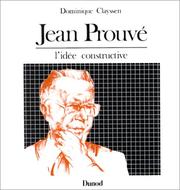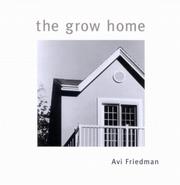| Listing 1 - 3 of 3 |
Sort by
|

ISBN: 3764361875 3035604088 9783764361877 9783035604085 Year: 2015 Publisher: Basel
Abstract | Keywords | Export | Availability | Bookmark
 Loading...
Loading...Choose an application
- Reference Manager
- EndNote
- RefWorks (Direct export to RefWorks)
in the years 1942 to 1948, Le Corbusier developed a system of measurements which became known as "Modulor". Based on the Golden Section and Fibonacci numbers and also using the physical dimensions of the average human, "Modulor" is a sequence of measurements which Le Corbusier used to achieve harmony in his architectural compositions. Le Modulor was published in 1950 and after meeting with success, Le Corbusier went on to publish Modulor 2 in 1955. In many of Le Corbusier s most notable buildings, including the Chapel at Ronchamp and the Unité d habitation, evidence of his Modulor system can be seen. These two volumes form an important and integral part of Le Corbusier s theoretical writings.
Architecture -- History. --- Architecture -- Philosophy. --- Architecture. --- Modular coordination (Architecture) --- Ratio and proportion. --- Architecture --- Corbusier, le --- anno 1900-1999 --- Arithmetic --- Geometry --- Proportion --- Building --- Dimensional coordination in building --- Modular design --- Standardization --- Modular coordination --- Composition architecturale --- Coordination dimensionnelle --- Nombre d'or --- Dimensionnement --- Rythme --- Le Corbusier, Charles-Edouard Jeanneret, --- Le Corbusier --- Le Corbusier, Charles-Edouard Jeanneret, 1887-1965 --- Coordination modulaire (architecture) --- Harmonie (esthetique)

ISBN: 2040106561 9782040106560 Year: 1983 Publisher: Paris : Dunod,
Abstract | Keywords | Export | Availability | Bookmark
 Loading...
Loading...Choose an application
- Reference Manager
- EndNote
- RefWorks (Direct export to RefWorks)
Coordination modulaire (Architecture) --- Ingénieur --- Prouve, Jean --- Modular coordination (Architecture). --- Prouvé, Jean, --- Modular coordination (Architecture) --- Architecture --- Building --- Dimensional coordination in building --- Modular design --- Standardization --- Modular coordination --- Prouvé, Jean. --- Prouvé, J. --- Prouvé, Jean, --- Architecte --- Designer --- Industrialisation --- Préfabrication --- Structure --- Prouvé, Jean --- Fonctionnalisme (architecture) --- Ingénierie

ISBN: 128285920X 9786612859205 0773569081 9780773569089 9781282859203 6612859202 0773521682 9780773521681 0773522042 9780773522046 Year: 2001 Publisher: Montréal [Que.] McGill-Queen's University Press
Abstract | Keywords | Export | Availability | Bookmark
 Loading...
Loading...Choose an application
- Reference Manager
- EndNote
- RefWorks (Direct export to RefWorks)
With economic restructuring, demographic shifts, and lifestyle changes, the traditional family - working father, stay-at-home mother, two to three children - is no longer the norm and the need for smaller homes at moderate cost has skyrocketed. The first prototype of the Grow Home was built on the campus of McGill University in 1990 and more than one thousand units were built across North America and Europe in the first year alone. In this illustrated guide, Friedman describes the background, conception, and construction of these modest (14" x 36") homes. He details their construction for prospective owners, builders, and architects, showing how past and contemporary precedents have been transformed and how the first versions were adapted by the building industry. Visits to completed Grow Homes shed light on why such homes were purchased and the process by which they "grew." Friedman also shows how the design has been adapted for prefabrication to meet the needs of the developing world. He describes the contribution that small-unit design makes to saving valuable natural resources and shares his experiences in planning communities based on the Grow Home. The Grow Home reveals the development and history of a concept that revolutionizes the home and building industry, has been translated into over 10,000 housing units, and has received, among many accolades, the United Nations World Habitat Award.
Dwellings --- Habitations --- Domiciles --- Homes --- Houses --- One-family houses --- Residences --- Residential buildings --- Single-family homes --- Buildings --- Architecture, Domestic --- House-raising parties --- Household ecology --- Housing --- Design and construction. --- Design and construction --- Economic aspects. --- Construction. --- Construction --- Aspect économique. --- House construction --- Modular coordination (Architecture) --- 72.038 --- 72.07 --- 728.3 --- Kleine goedkope woningen ; door de eigenaars zelf af te werken --- Modelwoningen ; prefab ; deels onafgewerkt --- Woningbouw ; rijhuizen ; prototypes ; 1990 ; A. Friedman --- Building, House --- Construction, House --- Home building --- Home construction --- Residential construction --- Architecture, Rural --- Domestic architecture --- Home design --- Rural architecture --- Villas --- Architecture --- Building --- Dimensional coordination in building --- Modular design --- Standardization --- Architectuurgeschiedenis ; 1950 - 2000 --- Architecten. Stedenbouwkundigen A - Z --- Woningbouw ; eengezinshuizen --- Modular coordination --- House construction. --- Architecture, Domestic. --- Coordination modulaire (Architecture) --- Architecture domestique
| Listing 1 - 3 of 3 |
Sort by
|

 Search
Search Feedback
Feedback About UniCat
About UniCat  Help
Help News
News